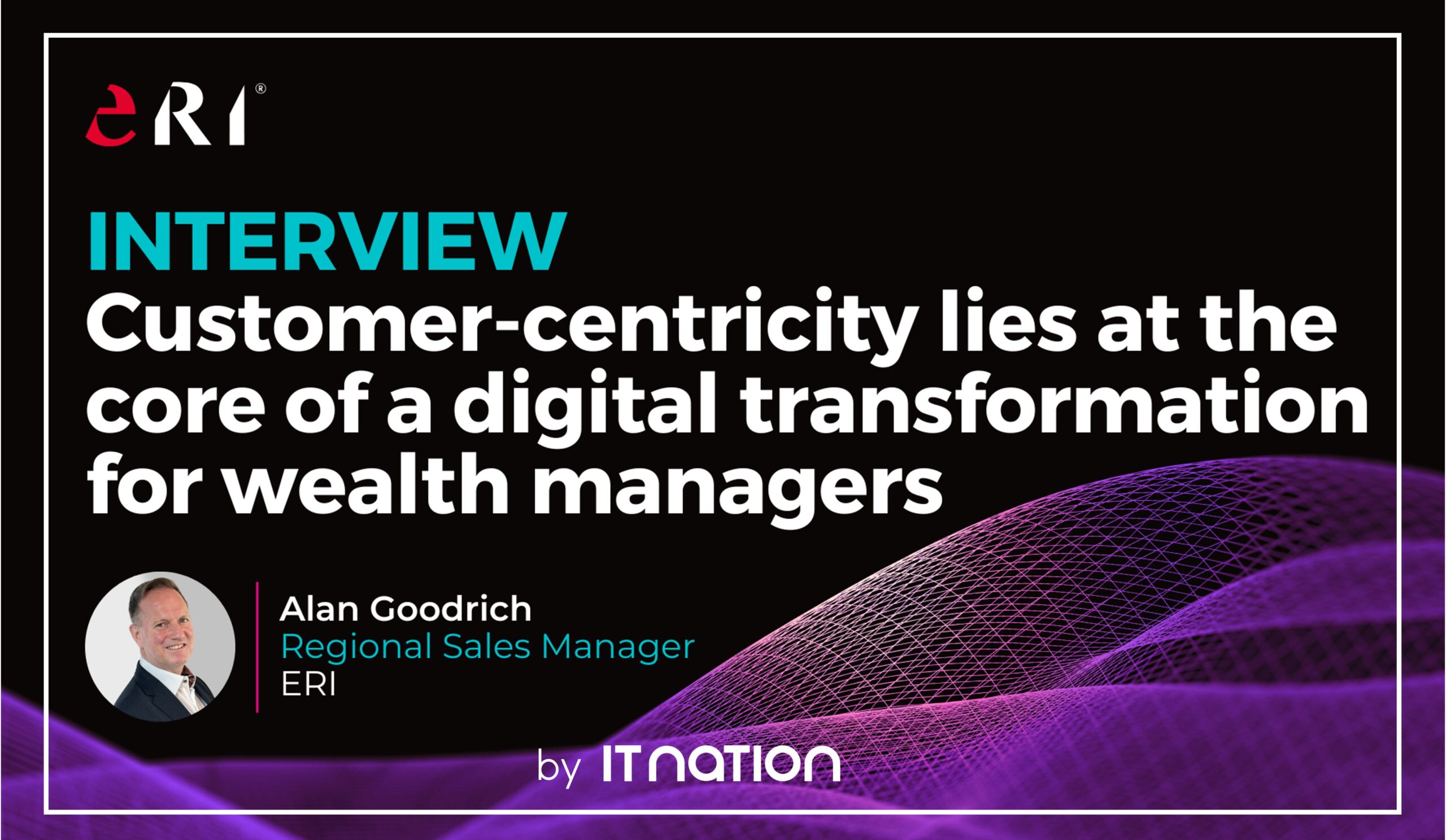DIGITAL SOLUTIONS
Customer-centricity lies at the core of a digital transformation for wealth managers
According to Alan Goodrich, Regional Sales Manager at ERI, wealth managers must put customer-centricity at the core of their digital transformation in order to achieve the expected returns on investment.
April 3, 2025

An international company, specialising in the design, development and distribution of OLYMPIC Banking System, ERI plays a pivotal role in the digital transformation of private banks and other actors in the field of wealth management. “Our core banking system has been chosen by more than 400 banks and financial institutions in over 60 countries world-wide,” reveals Alan Goodrich. “We are globally recognised for our remarkable ability to meet the needs of the wealth management industry, among other segments of the financial sector that we serve, with our flagship product. Our solutions assist our clients to profitably meet the expectations of their own customers, while allowing them to control their costs and risks in an increasingly demanding regulatory context.”
ERI’s vision, innovation and continuous investment in OLYMPIC Banking System have enabled it to transform over time into the modern, open system built on a service-oriented architecture (SOA) technology agnostic platform. “Financial services providers are confronted by a plethora of regulatory and business challenges. Understanding these, and enabling our clients to respond effectively by turning them into opportunities, makes us their preferred partner,” continues Alan Goodrich. “Our role is to facilitate the transformation of our clients’ business in this digital age and enable them to implement technology-based product and service innovations in order to differentiate and generate revenue while retaining and attracting a new digitally-savvy generation of profitable customers.”
Adopt a customer-centric approach
The beneficiaries of the greatest wealth transfer in our history expect their private bank or wealth manager to offer them a comprehensive set of digitally enabled self-serve tools and functionality. In the new paradigm, customers enjoy a user experience (UX) that supports new levels of interaction and engagement with their financial services providers. A much greater degree of streamlining across a broader set of operations is required. “Its about offering customers the enhanced service levels that keep them happy and hooked. Private bankers and wealth managers have a reputation for being conservative. However, in order to remain relevant, the time has come for some quite fundamental changes. Customer-centricity, i.e. knowing and understanding the customer-base, is critical to defining the digital transformation strategy. Modern technology is essential to cater to Gen Z needs and expectations, such as advisory services that integrate customers into the decision-making process and access to all the necessary banking services, whenever, wherever.” adds Alan.
The available data must be analysed in depth in order to answer key questions, such as; who are the most profitable customers and why, which products and services contributed to the acquisition and retention of these customers and what adaptations to those products and services (digital delivery, or otherwise) will attract the next generation of profitable customers. “Historically, to some extent due to the architecture of siloed, legacy systems, and balance sheet structures, financial services institutions have typically implemented a predominantly product-oriented approach to measuring and analysing profitability. However, modern solutions must enable institutions to pivot towards a customer-centric view of the impact, the experience, and the profitability of the products and services offered,” continues Alan Goodrich. “The challenge for institutions is to achieve a global view of the customer, around which it is possible to identify the drivers of profitability so that they can be replicated and adapted as the customer base evolves.”
Define a clear positioning
Achieving an efficient and effective digital transformation depends on this understanding of the existing customers and what drives their current and future expectations. Why do customers choose to trust the institution rather than another and to what extent? What attracts them? Is it the reputation, the expertise, the product or service offering, the digital experience, the relationship with the advisor? What are the future expectations? How to invest to ensure they achieve their economic and social objectives? At the same time, having a clear picture of the most profitable (as well as the least profitable) activities and the reasons behind them.
The answers to these questions will allow stakeholders to make better-informed decisions regarding the strategic investments that will ensure future relevance. The characteristics of customers, and their wealth, is essential to understanding and defining the digital transformation journey that will work for the institution and meet the objectives. For example, is it facilitating the digital on-boarding of customers or is it rather a question of strengthening the relationship, of being able to make personalised investment recommendations? From one actor to another, depending on the target customer profile, the transformations to be carried out may vary significantly. In a vast market, with varied expectations, the challenge is to allow each participant to best position themselves according to the strategy pursued by making better use of digital technology.
Transforming the heart of the institution
For many wealth managers, an important aspect of the digital transformation must be to improve the user experience via digital channels and, potentially, to extend the offering. For example, by facilitating access to new tokenised securities, digital assets or cryptocurrencies. “The digital transformation must not be limited to cosmetic or peripheral adaptations. Although it may seem less obvious and more complex, the key to success lies in a transformation at the heart of the institution, its core system, with a view to streamlining and improving end-to-end processes,” explains Alan. “In this context, we enable stakeholders to implement an integrated, service-oriented, API-driven solution, designed and built according to a customer-centric philosophy. Product and service design, regardless of the underlying instruments, can then be targeted to the relevant customer demographic, and further personalised to generate the best returns for both customers and wealth managers.”
Alan Goodrich
Regional Sales Manager at ERI
Fellow of the IAP (Institution of Analysts & Programmers)
ERI is the supplier of the OLYMPIC Banking System, offering award-winning wealth management technology.